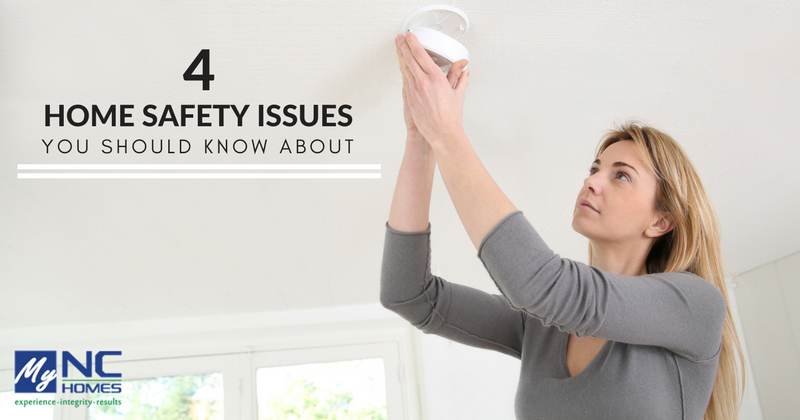
Whether you are a new homeowner or have owned your home for years, here are four vitally important things you really need to know about your house. You will be glad you knew about them in an emergency.
1. Water Shut-off Valves
 There are several water shut-off valves that you should be familiar with in your home. There is usually a shut-off valve at each sink and toilet. For a problem such as a clogged drain or a faucet that won't stop running, you can shut off the water at that source until the repair can be made.
There are several water shut-off valves that you should be familiar with in your home. There is usually a shut-off valve at each sink and toilet. For a problem such as a clogged drain or a faucet that won't stop running, you can shut off the water at that source until the repair can be made.
There is also a water shut-off valve for the whole house. If a pipe breaks and water starts to gush, you need to turn off the house shut-off valve to stop the water flow. Make sure you know where this valve is. If you had a home inspection it should be listed in the report you received. Often, they are in a closet on the main level though they can also be found in garages, exterior storage closets, and crawl spaces. If you live in an area where the winters get cold and you're planning on being away from the home for an extended period shutting off the water at this valve isn't a bad idea. It could save you thousands of dollars in possible damage were a pipe to freeze and burst and then thaw.
Finally, there is usually a street water valve. This is located where the water pipe runs from the city or county water supply to your property. If you find an unexpected pool of water between the street and your house, it is likely that your home water main has broken. You will need to shut off the street water valve to stop the flooding. You can buy a specific "meter wrench" at most hardware stores that are designed for this and makes the job easier, they typically run about $20. Of course, if you get your water from a well, you won't have the street water valve, but there should be a valve at the head of the well that turns off from the well to the house.
2. Know Where Your Gas Shut-Off Valves Are Located
If your home is equipped with natural gas, you will need to know where the gas shut-off valves are. There is usually a valve near the gas meter. It is easy to shut off. There may also be a shut-off valve near wherever a gas line enters the house, such as near a gas-operated fireplace. You should check out the location of all gas shut-off valves now so that you will know where to go if you ever need to shut off the gas to your home. Many homes in the country use propane and the tanks can either be buried or above ground. There will always be a cut off valve at the tank, but having one at the house is also advised.
3. Smoke and Carbon Monoxide Detectors
Smoke detectors and carbon monoxide detectors are inexpensive devices which can save lives. They are now required by code in every new home built. However, older homes may not have these devices because they may not have been required by code at the time the house was built, or they may not have even existed when the home was built. That is not a reason for undue concern because the monitors are inexpensive and easily installed, making them an excellent improvement for a home buyer.
Smoke detectors should be installed on the ceiling or high on a wall on every floor because smoke rises. They should not be installed in the kitchen because a small amount of cooking smoke could set off the alarm. They should be installed in every bedroom, where they can detect smoke and wake up anyone who is sleeping.
Smoke alarms are not hard to install. They come with installation instructions. You want to try to screw the mounting bracket into a stud for stability. Make sure you test the alarm once it is installed. Smoke alarms also have test buttons to make sure the alarm is operational. You should test them monthly. Batteries should be replaced twice a year. The usual recommendation is to change the batteries when you change your clocks to and from daylight savings time. Make sure that the batteries are easily replaceable. In some models, the batteries can be difficult to reach and replace.
Carbon monoxide detectors do not have to be mounted on a ceiling or wall. You should place a carbon monoxide detector near the furnace since this can be a source of carbon monoxide. Carbon monoxide spreads evenly throughout a room. So, you just need to locate the detectors in places where they will be kept clean and away from children and pets. Plug in models are easily found and can usually be easily placed on every floor where needed.
These days, there are also many wireless detector packages available. These wireless alarm systems are much easier to install than the older hardwired systems. We highly recommend these if retrofitting a home.
For good coverage; consider a combination detector for both carbon monoxide and smoke. Ideally having one of these on each floor ( if you use gas for heating or cooking) plus smoke alarms in each bedroom.
If you are planning to have an alarm system installed in your home, check with your alarm company. These companies can include smoke and carbon monoxide detectors as part of the alarm system, so you won't have to concern yourself with the installation.
4. Circuit Breakers Safety Switches
Circuit breakers are essential safety devices for your home. The circuit breaker is designed to cut off electricity if there is too much charge passing through the electrical wires or circuits in your home. For example, an appliance motor might overheat and cause an electrical fault that would cause the charge flowing through the house's wires to climb to unsafe levels. The circuit breaker would shut off the circuit. Once the problem is resolved, the circuit breaker can be turned back on at the electrical panel.
With newer construction or when there's been recent electrical upgrading, you will likely have what is commonly known as "arc-fault" breakers in your panel box. These operate slightly differently than standard breakers and provide additional protection in the event of an electrical fault which can occur for example when a tree limb falls on powerlines.
Check your circuit panel. Make sure that each breaker is clearly labeled for the appropriate appliance or room handled by that breaker. If you are a new home buyer, be sure to discuss each of these safety items with your home inspector. Your inspector can show you the location of each item and can also alert you to any problem or insufficiency with the items.
Posted by Larry Tollen on
Leave A Comment